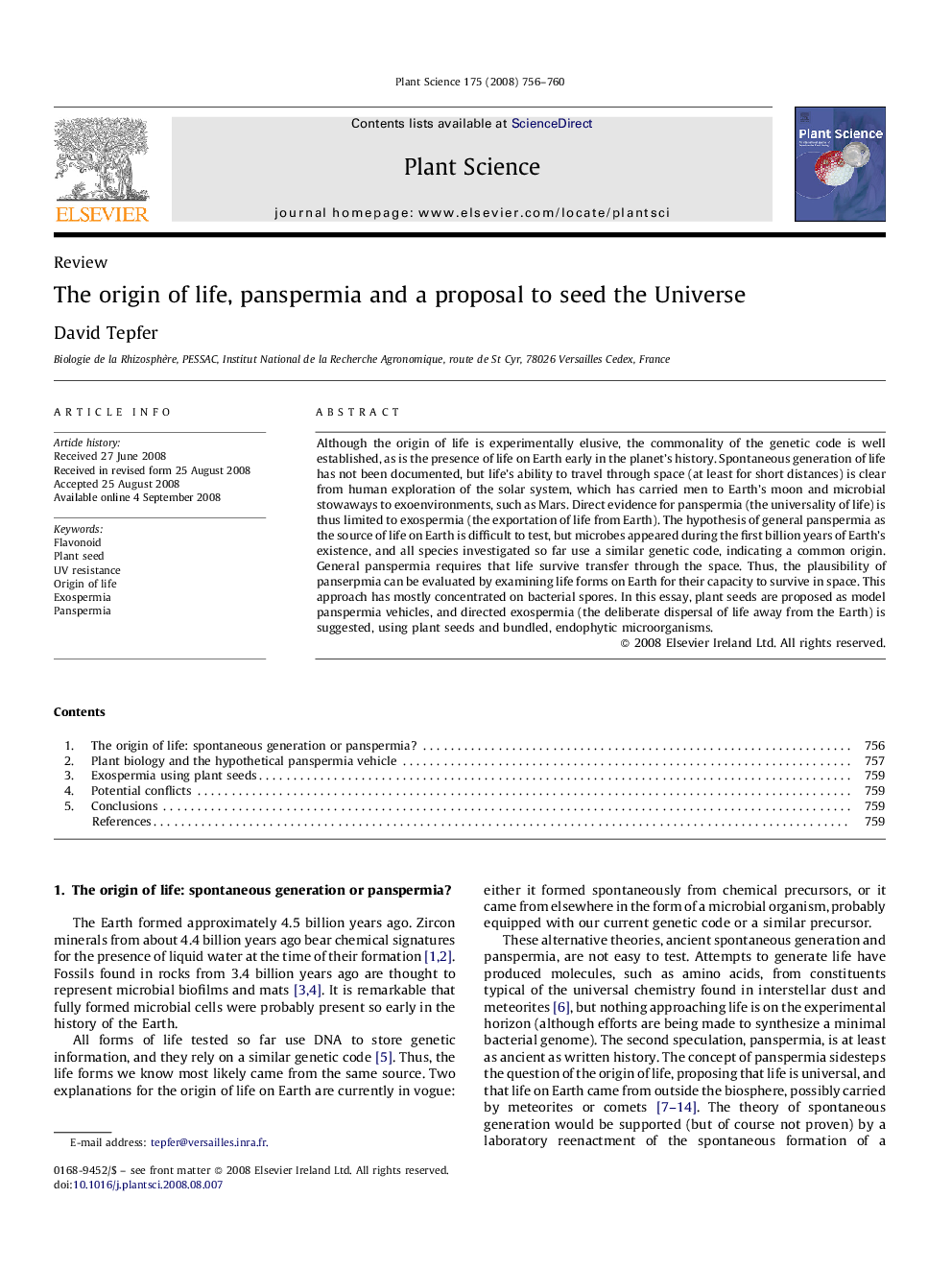| Article ID | Journal | Published Year | Pages | File Type |
|---|---|---|---|---|
| 2018416 | Plant Science | 2008 | 5 Pages |
Although the origin of life is experimentally elusive, the commonality of the genetic code is well established, as is the presence of life on Earth early in the planet's history. Spontaneous generation of life has not been documented, but life's ability to travel through space (at least for short distances) is clear from human exploration of the solar system, which has carried men to Earth's moon and microbial stowaways to exoenvironments, such as Mars. Direct evidence for panspermia (the universality of life) is thus limited to exospermia (the exportation of life from Earth). The hypothesis of general panspermia as the source of life on Earth is difficult to test, but microbes appeared during the first billion years of Earth's existence, and all species investigated so far use a similar genetic code, indicating a common origin. General panspermia requires that life survive transfer through the space. Thus, the plausibility of panserpmia can be evaluated by examining life forms on Earth for their capacity to survive in space. This approach has mostly concentrated on bacterial spores. In this essay, plant seeds are proposed as model panspermia vehicles, and directed exospermia (the deliberate dispersal of life away from the Earth) is suggested, using plant seeds and bundled, endophytic microorganisms.
